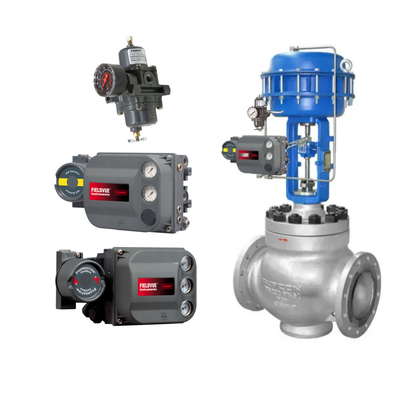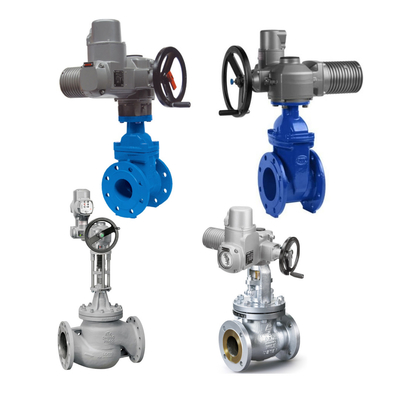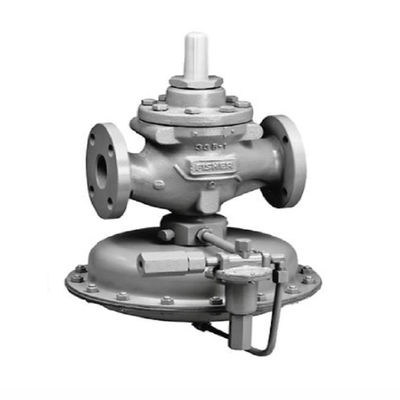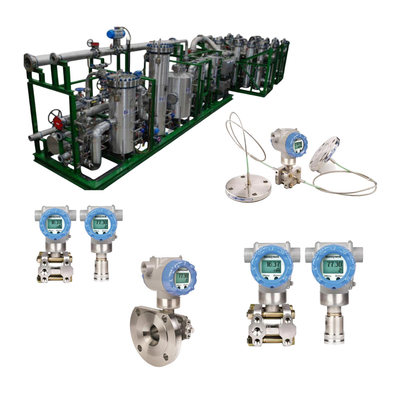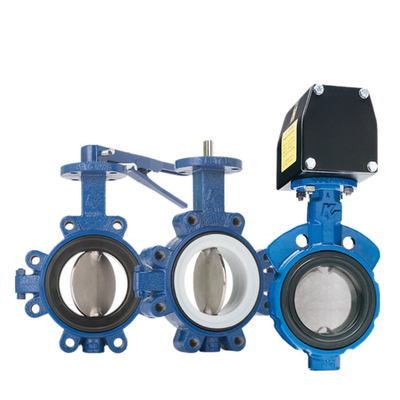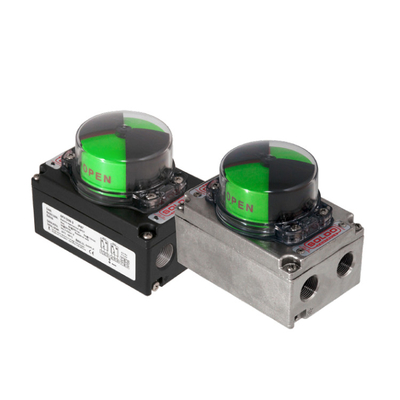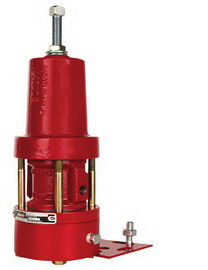Applications of Control Valves in the Oil and Gas Industry
In the oil and gas industry, control valves serve as critical fluid control equipment, playing an indispensable role. By precisely regulating fluid flow rate, pressure, temperature, and level, they ensure safe, efficient, and stable production processes. With the continuous growth of global energy demand and the advancement of industrial automation, the application of control valves in the oil and gas sector is expanding rapidly. According to 2025 market research data, the global control valve market is projected to reach approximately $17.85 billion, with the oil and gas industry accounting for over 40% of this market, growing at a compound annual growth rate (CAGR) of about 4.65%. This growth is driven by energy development in emerging economies, the shale gas revolution, and environmental regulations. This article will delve into the specific applications of control valves in the oil and gas sector, providing readers with comprehensive analysis and insights through practical case studies and technological trends. Additionally, we will highlight the professional contributions of Shanghai Gongboshi (Xiangjing) Company in this field, assisting enterprises in optimizing their valve solutions.
The Fundamental Principles of Control Valves and Their Necessity in the Oil and Gas Industry
Control valves, also known as regulating valves, are automated devices composed of a valve body, actuator, and accessories. They adjust valve opening based on control signals (such as commands from PLC or DCS systems) to achieve precise fluid control. In the oil and gas industry, this precision control is critical due to the sector's involvement with high pressure, high temperatures, corrosive media, and flammable/explosive substances. Failure of a control valve can lead to production interruptions, safety incidents, or environmental contamination.
The production chain in the oil and gas industry is segmented into upstream (exploration and production), midstream (transportation and storage), and downstream (refining and processing). Control valves play a central role in each segment. According to a 2025 industry report, their application helps reduce methane emissions, enhance energy efficiency, and support advanced oil and gas recovery technologies. For instance, in high-pressure environments, control valves prevent pipeline overpressure; in corrosive media, valves made of corrosion-resistant materials extend equipment lifespan. Market data indicates that demand for control valves in the oil and gas sector is growing at a CAGR of 6.5%, particularly in Asia-Pacific and North America. This growth stems not only from increased crude oil production but also from digital transformation, such as the rise of IoT-integrated control valves.
For enterprises, selecting the appropriate control valve type—such as ball valves, butterfly valves, gate valves, or globe valves—is crucial for optimizing production. Pneumatic control valves suit rapid-response scenarios, while electric control valves are better suited for precision control. Understanding these principles helps readers assess the practical value of control valves within the oil and gas industry.

Upstream Phase: Application of Control Valves in Exploration and Production
The upstream phase of oil and gas production involves drilling, well completion, and primary separation in complex and dynamic environments. Control valves are primarily used to regulate high-pressure fluids and gas separation.
During drilling operations, control valves are integrated into mud circulation systems to precisely regulate drilling fluid flow and pressure, preventing blowouts. For instance, on offshore drilling platforms, Weir Group's high-pressure control valves withstand thousands of PSI to ensure drilling safety. The 2025 North American Shale Gas Market Report highlights that control valve applications enhance Enhanced Oil Recovery (EOR), boosting recovery rates by over 20% through steam injection or chemical injection. Emerson's Fisher series control valves excel in steam injection systems, enabling real-time temperature adjustments to optimize thermal energy utilization.
In oil-gas separators, control valves regulate liquid levels and gas-liquid separation. Flowserve's Durco control valves are renowned for corrosion resistance, making them suitable for acidic natural gas environments containing hydrogen sulfide. IMI PLC's pneumatic control valves are deployed in compressor stations to regulate gas flow and prevent overloads. In practical applications, these valves were used in deep-sea drilling projects in the South China Sea, reducing energy consumption by 15%.
Furthermore, in hydraulic fracturing (fracking) technology, control valves manage the injection of high-pressure water and chemical agents. Market trends indicate that as environmental requirements intensify, low-emission control valves will become mainstream in upstream operations, helping reduce methane leakage. When evaluating upstream projects, readers should prioritize the pressure resistance and compatibility of control valves to ensure safe production.
Midstream Phase: The Role of Control Valves in Transportation and Storage
The midstream phase focuses on oil and gas pipeline transportation and storage, where control valves ensure smooth fluid flow and system safety.
Pipeline transportation is central to midstream operations, where control valves manage flow regulation and pressure adjustment. For instance, in long-distance pipelines, Emerson's electric control valves integrate sensors for remote pipeline pressure monitoring and leak prevention. The 2025 Global Valve Market Report highlights that control valve applications help reduce pipeline corrosion and energy losses. Weir Group's modular control valves are widely adopted in Middle Eastern natural gas pipeline projects, with their rapid-response design reducing downtime by 30%.
In storage tank farms, control valves regulate liquid levels and inert gas injection to prevent explosion risks. Flowserve's low-maintenance control valves are suitable for LNG (liquefied natural gas) storage, ensuring reliable operation at cryogenic temperatures. IMI PLC's actuator-controlled valves optimize flow in pump stations, reducing pump wear. In practical applications, North America's shale gas transportation networks rely on these control valves for efficient distribution.
With digital transformation, midstream control valves are integrating into SCADA systems to enable predictive maintenance. Reports indicate this trend will drive the control valve market to reach $16.27 billion between 2025 and 2032. Companies must prioritize explosion-proof certifications and remote control capabilities to meet global midstream demands.

Downstream Phase: Application of Control Valves in Refining and Processing
The downstream phase involves crude oil refining and natural gas processing, where control valves precisely regulate chemical reactions and product separation.
In refining processes, control valves are used in units such as cracking, distillation, and hydrogenation. For instance, in catalytic cracking units, Emerson's Fisher control valves regulate the steam-to-feed ratio to increase gasoline yield. Flowserve's corrosion-resistant control valves are suitable for acidic environments, extending equipment lifespan. A 2025 chemical valve market analysis indicates that control valve applications can reduce carbon emissions by 10%, supporting green refining.
In natural gas processing plants, control valves manage desulfurization and dehydration processes. IMI PLC's high-pressure control valves regulate amine solution flow in absorbers to ensure efficient sulfur removal. Weir Group's control valves control temperatures in heat exchangers to optimize energy recovery. In one case study, an Indian refining project using these valves increased product purity by 15%.
Downstream trends include the rise of intelligent control valves, such as AI-integrated valves capable of predicting failures. Market reports project that downstream control valve demand will account for 35% of the overall market by 2030. Readers should prioritize precision and environmental performance in downstream applications to comply with stringent regulations.
Challenges and Future Trends for Control Valves in the Oil and Gas Industry
Despite their widespread application, control valves face challenges in the oil and gas industry, including high pressure, corrosion, and extreme temperatures. Solutions include adopting advanced materials such as titanium alloys and ceramic coatings, along with digital monitoring.
Key trends for 2025 include:
- Green control valves reducing leakage to support carbon neutrality;
- Smart control valves integrating IoT for remote diagnostics;
- Modular designs facilitating maintenance.
Market data indicates these innovations will drive a 9.1% CAGR for control valves.
Companies must evaluate total cost of ownership (TCO) and select reliable suppliers to address these challenges.
Shanghai Gongboshi (Xiangjing, Official Website: www.shgongboshi.com), with over two decades of deep expertise in the control valve industry, has accumulated extensive experience particularly in the oil and gas sector. We provide clients with premium control valve products from internationally renowned brands such as Emerson, IMI PLC, Flowserve, and Weir Group, while also covering high-end brands from other countries to ensure diverse options.
Within the oil and gas sector, Gongboshi delivers end-to-end solutions across upstream, midstream, and downstream operations. For instance: - In upstream drilling projects, our Emerson Fisher control valves achieve precise pressure regulation, reducing energy consumption by 20%. - For midstream pipeline transportation, Weir Group's high-pressure control valves ensure secure material transfer. - In downstream refining and chemical processing, Flowserve's corrosion-resistant control valves optimize chemical processes, boosting efficiency by 15%. Additionally, Gongboshi delivers customized technical services including valve selection, installation guidance, remote diagnostics, and maintenance support, helping reduce downtime by 30% and elevate overall service experiences.
With over two decades of industry expertise, Gongboshi has become a trusted partner for numerous oil and gas enterprises. We are committed to providing superior valve solutions that empower efficient, sustainable operations. Visit our official website at www.shgongboshi.com for more details.

 Your message must be between 20-3,000 characters!
Your message must be between 20-3,000 characters! Please check your E-mail!
Please check your E-mail!  Your message must be between 20-3,000 characters!
Your message must be between 20-3,000 characters! Please check your E-mail!
Please check your E-mail! 
